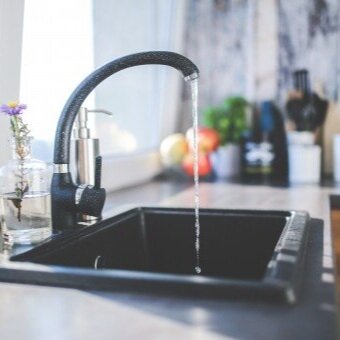All There Is To Know About An Anti-Siphon Faucet
Clean water is crucial to a healthy society. In the United States, there are regulations on how we can reuse water to ensure that communities have uncontaminated and potable water for drinking and other activities within their households. An anti-siphon faucet or valve is installed to prevent the backflow of dirty water into the clean water source. People use anti-siphon taps for outdoor plumbing, utility sinks, and mainly where a hose is attached to supply water outside of a home. Continue reading for more information on anti-siphon faucets and how we use them.
Backflow prevention
Anti-siphon faucets prevent unsanitary water from being sucked into the potable water supply used for drinking, bathing, and cooking indoors. Federal housing codes require anti-siphoning devices, so most homes come equipped. Plumbing codes require that a functioning anti-siphon faucet or device must cover all hose bib connections. A hose bib is a small faucet or spigot outside, usually where people connect a garden hose.
The faucet and the valve
There are two types of anti-siphon mechanisms: the faucet and the valve. The taps come equipped with a device that only lets the water flow one way. This design prevents contamination because the lowered water pressure in the pipes could suck dirty water back in. The add-on or anti-siphon valve is an attachment for an outdoor faucet. Both meet necessary plumbing codes and function the same. Fittingly, anti-siphon faucets are referred to as “vacuum breakers” because they stop non-potable water from being sucked back in.
Installing an anti-siphon faucet
To adequately meet water safety standards, the anti-siphon valve needs to be installed correctly. Here is how to install an anti-siphon valve:
Turn off the main supply of water to the house.
Remove any hoses or attachments from the current fixture.
Turn on the spigot and let the leftover water drain.
With an adjustable wrench, turn the body of the fixture or spigot clockwise. You are trying to unscrew it completely.
Cover the pipe threads that came with the anti-siphon valve with plumber’s tape.
Screw the pipe into the area or fitting where you removed the spigot.
Using a pipe wrench, tighten the short pipe and the valve.
Wrap more plumber’s tape on the edge of the pipe threads and screw the device onto the threads.
Using an adjustable pipe wrench, secure the valve to the pipe. Stop turning when it fits tightly, and the faucet handle is in the correct position.
Turn the main water supply for the house back on to test the new faucet.
Run the anti-siphon valve for 20 seconds to ensure it is working correctly.
Protecting the public water supply from being contaminated is vital to keeping people healthy. If you are building a new home or deciding on further irrigation for the outside of your home, you will need an anti-siphon valve or faucet to pass local plumbing codes. Contact a professional plumber for help.
With over 25 years of experience, American Discount Plumbing has offered expert plumbing service and repair in Phoenix, Arizona, and surrounding cities at affordable rates for both residential and commercial properties. We are a licensed, bonded, and insured plumbing company offering 24-hour emergency service. We provide lasting general plumbing, water leak detection and repair, toilet repair, pipe repair, and water heater repair or replacement solutions. Call 602-883-2787 today!

